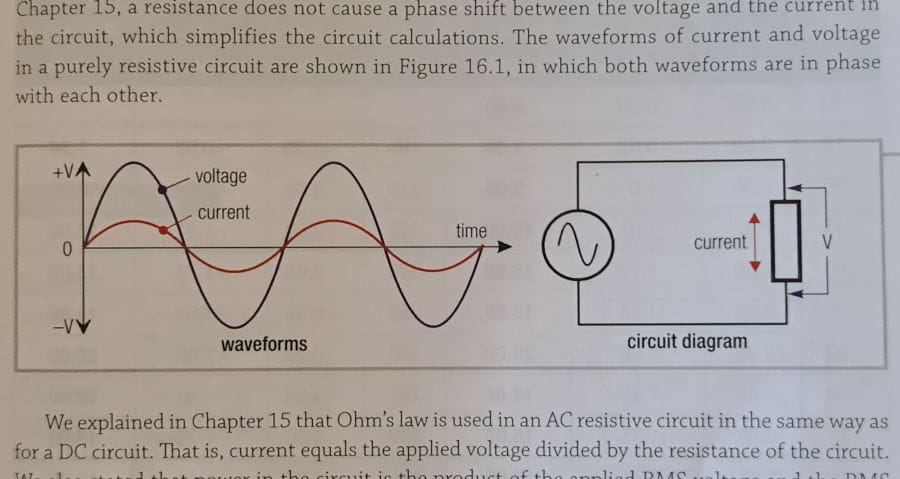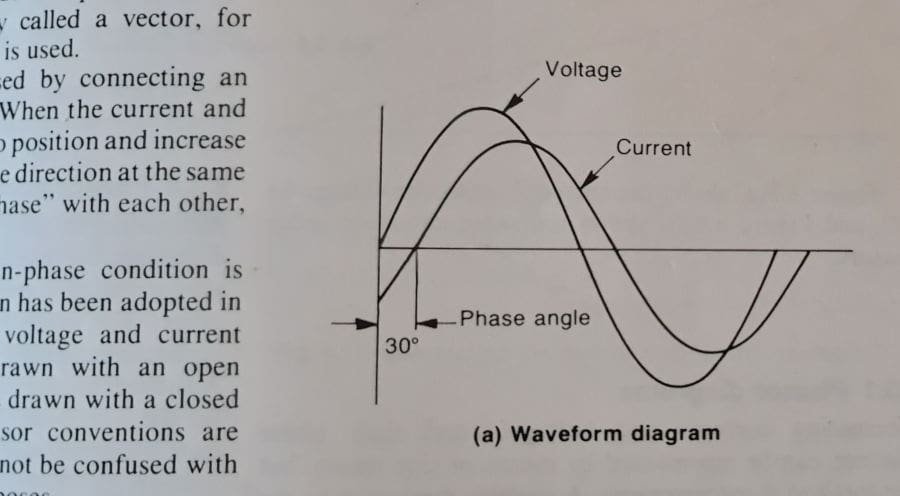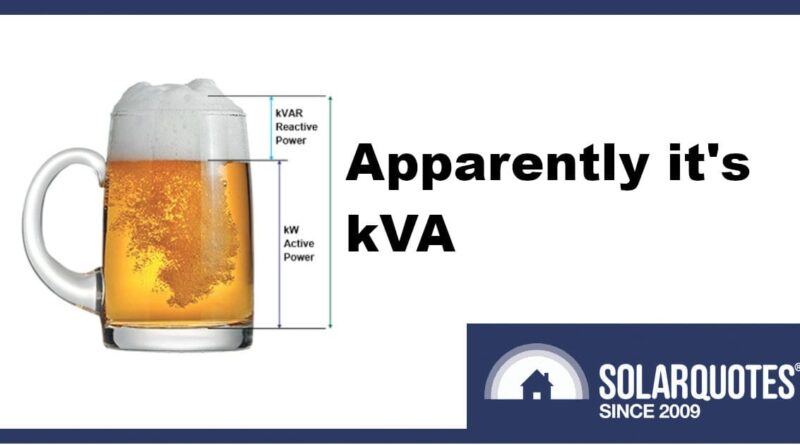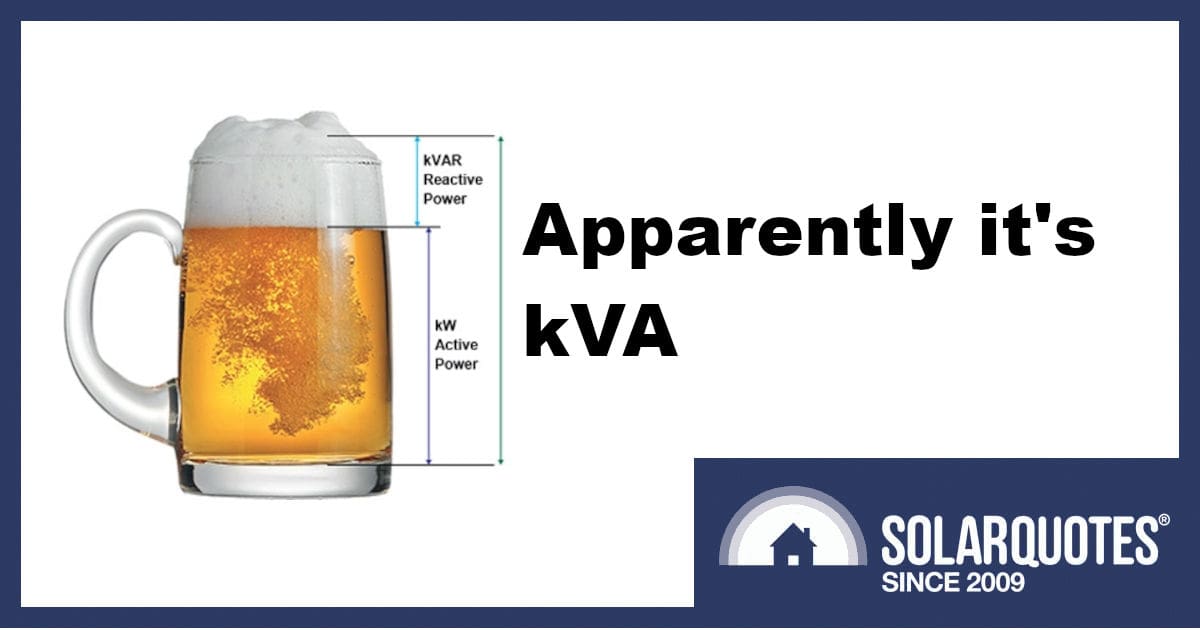Pint Glasses to Power Grids: Explaining kW and kVA
Electrical devices have many different ratings, but one of the most confusing distinctions for the average consumer is between kilowatts (kW) and kilovolt-amperes (kVA).
Kilowatts vs. Kilovolt-Amperes: Decoding the Jargon
Half of humanity confuses the relatively easy-to-explain kilowatt-hours with plain kilowatts (you’ll find some good references here for kWh vs kW).
But hold onto your hat, because the concepts I’m explaining below are a bit more abstract.
The classic trade-school explainer on kVA and power factor involves a pint of beer. The useful part is the glorious amber liquid you can drink — that’s active power. But on top there is always that white foam; simultaneously useless and indispensable — that’s reactive power.
If you’re now confused and thirsty, don’t worry. I assure you most apprentices are too. But bear with me while I try to draw a picture with words.
(And if you’re an electrician, retired engineer or similar pedant, please go easy in the comments section. We’re here to help the punters.)
Calculating Kilowatts
Getting a handle on kilowatts isn’t too hard, we’ve run through it before with a simple ohms law calculation.
- Take the ordinary mains supply of 230 volts (this is the pressure that drives an electrical circuit).
- Multiply 230 by the amperes required (the measure of current, or flow of energy needed by the device).
- For 8.7-amps, for example, the result is 8.7 x 230 = 2,000 watts, or 2kW.
This would be enough energy to run a fan heater, kettle, toaster or small, conventional hot water service. These are simple resistive loads, just like a bathroom heat lamp.
Other similarly heavy loads could include a pool pump, air compressor or split-system air conditioning unit. However, these are inductive loads. They have large inrush currents, so they’re difficult to start. They also react with, and cause distortion on, the mains supply.
That reaction or distortion has a separate rating: power factor.
Kilowatts (kW) represent the actual active power used for doing useful work.
Kilovolt-Amperes (kVA) refers to the apparent power. That is, the working power plus the reactive power factor — which does not do the useful work, but is necessary to maintain the voltage levels in the system.
Real-World Applications of kVA and kW
In practical terms, most people aren’t aware of the differences between kVA and kW until they go camping and want to buy an inverter or petrol generator for power. The local tool shop will have machines rated in kVA, and they’ll sensibly advise buying more than you need.
-
- For your 2kW-resistive crab-cooking pot, a 2kVA generator may be sufficient.
- However, an air compressor (inductive load) would need at least 2.5kVA capacity to run.
- Additionally, the surge required for starting an induction motor would demand the generator put out at least 10 to 12kVA.
A Different Type Of Horsepower
Imagine a horse (electrical system) pulling a cart (load) along a road. The effort the horse puts into moving forward is the actual work (kW) being done to move the cart.
However, if the road is boggy dry sand, the horse needs to exert extra effort just to maintain its footing.
In every step, energy is used pushing sand around. This doesn’t directly contribute to moving the cart forward, but it is necessary to complete the overall task.
The total effort (kVA) combines both these aspects: the actual moving forward plus the effort to plough through the sand without slipping.
In ideal conditions, the road is smooth and hard, so all the horse’s effort goes into moving the cart forward (meaning kW equals kVA). But in reality, roads can be boggy, requiring more total effort (kVA) than what directly contributes to the movement (kW).
Ideal Loads vs. Inductive or Capacitive Loads
-
-
- Ideal Loads (Unity Power Factor):
Ideal loads enjoy a ‘smooth road’, meaning all the power supplied (kVA) is used as effective work (kW).
The power factor in this scenario is 1 (the unity power factor), indicating no difference between kVA and kW.
- Ideal Loads (Unity Power Factor):
-

A simple single-phase AC wave with current in perfect unity with voltage. Image credit: Phillips 1996.
-
- Inductive or Capacitive Loads:
Inductive or capacitive loads introduce a ‘boggy road’, whereby part of the power (reactive power) does not do any useful work, and instead creates a phase shift between voltage and current.
This scenario requires more apparent power (kVA) to do the same amount of work (kW), decreasing the system’s efficiency. Excess reactive power can also potentially cause overheating and damage.
- Inductive or Capacitive Loads:

An inductive load ‘bogs down’ the current, causing it to lag by 30°. Image credit: Jenneson 1980.
It’s A Slippery Concept
For a little nerdier detail, imagine an AC wave. The electricity coming from your wall socket alternates between 230-volt peaks and troughs, crossing through zero in between, at a frequency of 50 Hertz (Hz). This frequency is what your oven uses to keep time.
In an ideal resistive load, the voltage and current are perfectly synchronised. As the voltage pushes, the current rises obediently, and as voltage ebbs, the current drops. They rise and fall together in harmony and it’s all very efficient.
With an inductive load you could say there’s inertia. The voltage might rise but the current lags behind, so you need more energy to get it moving.
However, once the current is underway, it resists the change in pace when the voltage falls again, and arresting this runaway current takes more energy again.
What you see is the current ‘reacting’, or pushing back on the voltage that it should be skipping along with in harmony. It even has a unit of measurement called Volt-Ampere Reactive (VAR).
A capacitive load has a similar but opposite effect. When you apply a voltage to an empty capacitor, there is so little resistance, current will pour into it in a fraction of a second.
To use a water-based analogy, it’s faster than upending a bucket and waiting for gravity to draw the water out. Rather, it’s like opening a portal to space, where the water disappears into a vacuum quicker than you can blink.
Electrically, this means the current will lead the voltage, which is supposed to be pushing it along.
No matter which is leading or lagging, the difference between voltage and current is the power factor. It creates waste heat in your wiring, motors or appliances, and requires extra energy to be supplied by the mains transformers on the street.
The fun part is that grid-connect solar inverters can be programmed to help support the grid, and since AS4777.2020 standards came into effect, installers have been obliged to select or program inverters to raise or sink VARs depending on grid voltage.

Phase angles: This is how you convert the push-pull of an AC wave into a rotating motor.
Ratings Can Be Deceptive
My own Honda generator has a model number 3.0i, arguably suggesting 3kW capacity. But it’s actually only rated for 2.8kW.
Victron (which I really like) offers a mind-bogglingly comprehensive array of different inverters, chargers and regulators, all integrated with various sensors, displays and monitoring. There’s nothing better in a lot of situations. However, if you take them at face value, the inverter chargers we use for remote-area power just don’t do what they say on the tin.
A blue box with a part number 5000/48/75 implies that the system is capable of 5kW. It’s actually 5kVA. And in truth, with a power factor of 0.8, that means a nominal output of 4kW.
Worse still, as a 48-volt battery charger, this system would be rated for 75amps. So the real continuous rating for this machine is 48×75, an honest 3.6kW. You just have to be aware and size them to suit.
Be Alert But Not Alarmed
The difference between kVA and kW is important when designing and operating electrical systems, and this is why network companies specify maximum inverter capacities in kVA.
For the end user getting a solar connection approval, it’s good to have an understanding of these things. But, honestly, for a consumer buying solar, the terms are basically interchangeable.
Original Source: https://www.solarquotes.com.au/blog/explaining-kw-kva-power-grids/



















